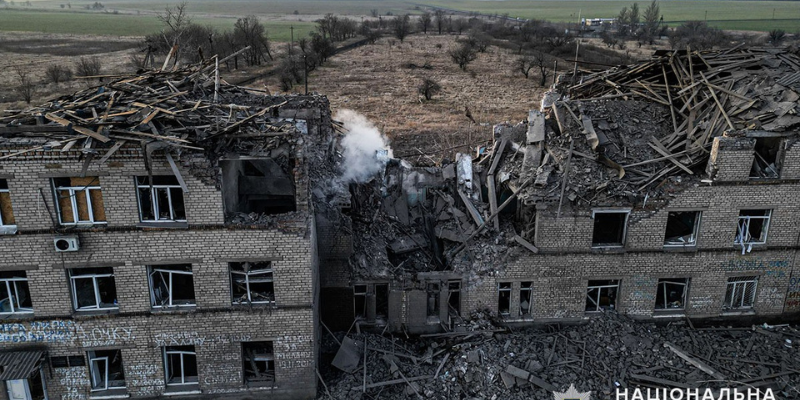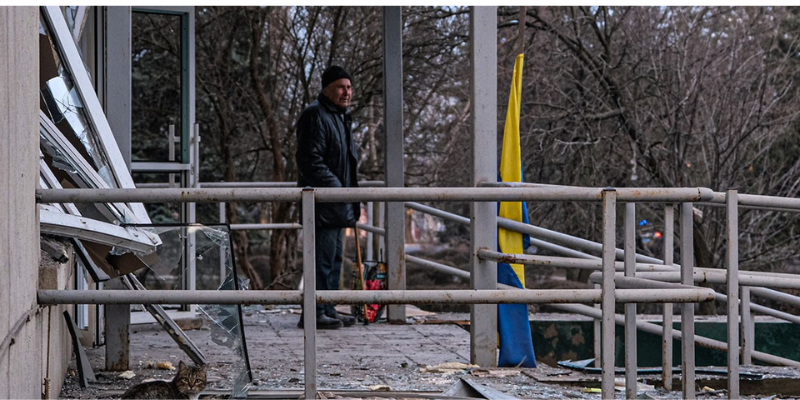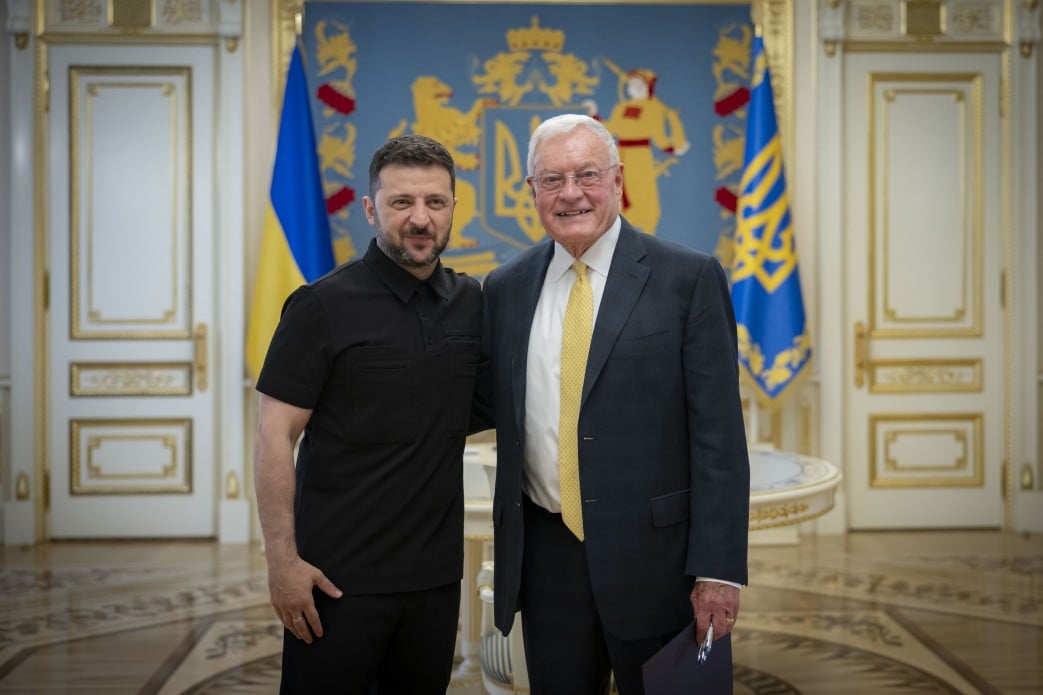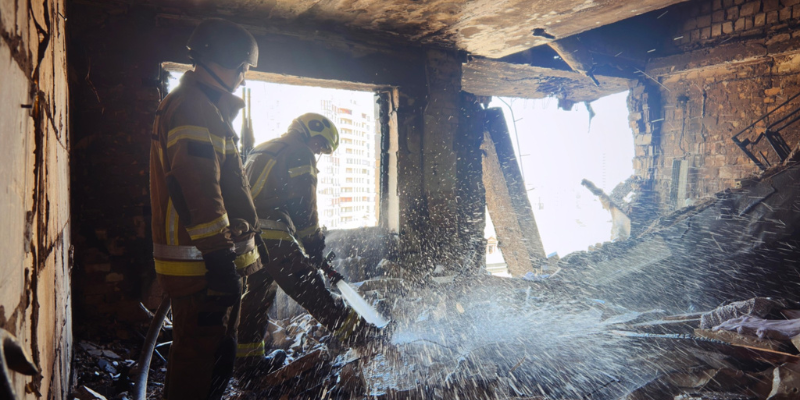Child, two adults killed after Russians attack hospital in Selydove
Russia shells hospital in Donetsk oblast hits maternity ward. The attack occurred around 1:00 am, when nearly 200 people were in the hospital, including several patients in critical condition.
Search and rescue operations commenced immediately, and rescue workers were able to save a 6-month-old baby, while six people, including a child, sustained injuries. The injured and patients were evacuated to other medical facilities in the region.
Tragically, the bodies of three individuals, including a 9-year-old child, were recovered from beneath the rubble. According to Veronika Bahal, spokesperson for the State Emergency Service of Ukraine in Donetsk Oblast, there were approximately 149 patients in the hospital when the missile struck.
SOURCESymbolic number of the Day
The United States has donated over $1 million worth of demining equipment to Ukraine to help address the issue of landmines. Ukraine has a significant problem with landmines, with more than a third of the country’s territory affected due to Russia’s invasion. The donation is expected to allow Ukraine to deploy more demining teams and accelerate the country’s recovery efforts. U.S. Ambassador to Ukraine Bridget Brink emphasized the importance of this assistance in tackling the issue. In addition to the equipment donation, Ambassador Brink also met with Ukraine’s Finance Minister to discuss further financial support for the country. Ukraine has taken steps to address the problem by introducing mine safety courses as a mandatory part of the school curriculum.
SOURCEWar in Pictures
Ukrainian emergency workers repair buildings damaged by Russian shelling in Donetsk Oblast. Over the weekend, rescuers carried out restoration work on 10 apartment buildings in Selydove that were damaged by Russian missiles. The workers covered 90 window openings with plywood, dismantled 500 square meters of damaged rooftops, installed 60 square meters of wooden reinforcements, and covered 100 square meters of rooftops with tarpaulin.
SOURCEVideo of the Day
On February 14, 2024, the Defence Intelligence of Ukraine (HUR), in cooperation with the Security and Defence Forces, successfully destroyed the “Tsesar Kunikov” landing ship of the Russian Black Sea Fleet. The operation was carried out by Defence Intelligence’s “Group 13” unit. The enemy ship was hit by Ukrainian-made Magura V5 maritime strike drones near the city of Alupka in Crimea. The ship sustained critical damage to its port side and began to sink. The “Tsesar Kunikov” was a relatively new amphibious assault ship with a capacity of 87 crew members. Russia used the ship in combat against Georgia, Syria, and Ukraine. The occupiers’ search and rescue operation was unsuccessful.
SOURCEISW report

Ukrainian military observer Kostyantyn Mashovets reported that Russian forces are attempting to restore maneuver to the battlefield through Soviet deep battle theory but are struggling with implementing Soviet deep battle so far due to current Ukrainian capabilities. Mashovets stated that Russian forces are attempting to implement Soviet deep battle theory for operational planning to rapidly break through Ukrainian defenses but are failing to achieve the effects of Soviet deep battle operations.
Deep battle theory is a product of Soviet operational art developed in the 1920s and 1930s that was designed to restore maneuver to battlefield after World War I by engaging the enemy on multiple fronts and in depth at the tactical and operational levels by attacking enemy assets at all echelons with artillery, airstrikes, and attacks against the enemy’s rear in concert with frontal attacks to penetrate the enemy’s defensive lines.
Deep battle theory also posits that successful operational design includes sequenced plans for successive operations to prevent the defender from re-establishing coherent defensive positions following a penetration and its exploitation.
Deep battle theory’s key operational tenets are still valid in modern war, and the Russian military could restore maneuver to the battlefield and overcome Ukrainian defenses if it could successfully plan and execute operationally sound campaigns using deep battle theory. Ukrainian forces could also use deep battle theory to restore maneuver to the battlefield to their advantage if their Western supporters properly resourced them.
Mashovets, however, noted that Russian forces’ current limited capabilities, specifically in conducting effective counterbattery fire, striking targets at operational depth, concealing force concentrations from the enemy, and combating Ukrainian technological parity, are preventing Russian forces from achieving the operational level surprise necessary to break through Ukrainian lines and conduct deep battle operations.
Mashovets stated that the Russian military command is failing to implement certain technological innovations into operational planning, including remote mine laying; large scale drone operations; command-and-control; and communications using modern technology.
SOURCEWar Heroes

Police Captain Ivan Shevchenko, call sign “Cop”, died in a firefight with the enemy near the village of Klishchiyivka, Donetsk Oblast on August 21, 2023. The officer was 32 years old. Ivan was from the village of Pidobna, Cherkasy Oblast. He graduated from Odesa National University. He was fond of fishing and hunting.
From 2014-2018, he fought in the ATO and the Joint Forces Operation in the ranks of the Storm Battalion of the Special Police Patrol Service. In 2018, he began working as an inspector of the Patrol Police Response Sector No. 3 of the Bilіaivka Police Department of the Main Department of the National Police in Odesa Oblast. Then in November 2020, he was transferred to the Mankivka Police Department of the Cherkasy Oblast Police, working as a district officer in the village of Mankivka.
In the spring of 2023, Ivan Shevchenko transferred to the “Rage” Joint Assault Brigade of the National Police and went to war. He served as a platoon inspector of the “Tsunami” assault regiment.
During his service, Shevchenko earned numerous awards, including certificates, letters of commendation, and medals; he was posthumously awarded the Order for Courage, III class, and the Cross of the Brave award.
“He was a true hero and patriot of his country, never afraid of difficulties, a loving husband and father, a good son,” said the deceased’s wife, Olena. The officer was buried in his native village. Ivan is survived by his parents Yurii and Tetiana, wife Olena, and son Tymofii.
*Ivan’s story on the Heroes Memorial – a platform for stories about Ukraine’s fallen defenders.
SOURCELatest news
- Speaker Johnson wants a private meeting with Biden before moving forward on Ukraine aid
- Estonian intelligence: Russia could double troops on border, NATO must be better prepared for their attack
- Italy will allocate 500,000 euros to reconstruct downtown Odesa damaged by Russia
- Reuters: Russian officials claim US has rejected Putin’s proposed peace talks
- Ukraine’s Navy reports that Russia has only 5 Ropucha-class ships left in its Black Sea Fleet after the sinking of the “Tsesar Kunikov”













